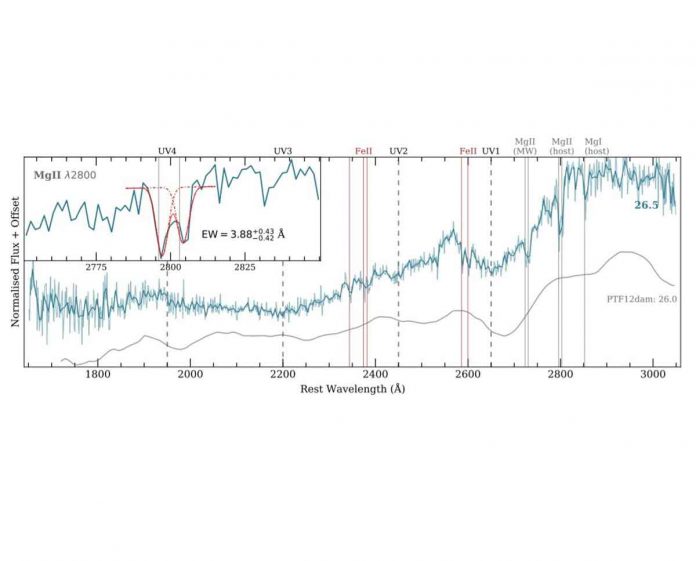Astronomers have performed spectroscopic observations of a nearby Type I super luminous supernova. It is known as SN 2018bsz. The observational campaign shaded more light on the properties of this supernova. It showcased aspherical circumstellar material. The study has been published in arXiv.org.
Supernovae are powerful and luminous stellar explosions. They are important for the scientific community. They offer essential clues into the evolution of stars and galaxies. SNe are divided into two groups based on their atomic spectra. They are Type I and Type II. Type I SNe lack hydrogen in their spectra. Type II showcase spectral lines of hydrogen.
Superluminous supernovae are characterized by exceptionally bright long-lived light curves. Interaction of the SN ejecta with surrounding circumstellar material is an efficient mechanism to convert kinetic energy of the ejecta into radiation. It is assumed that such process may power SLSNe.
SN 2018bsz was first detected on 2018. It was detected by All Sky Automated Survey for SuperNovae. It was was initially classified as a Type II SN. But later it was proved as a Type I SLSN. The host galaxy of SN 2018bsz is 2MASX J16093905-3203443. It makes this supernova the closest SLSN-I discovered so far.
Previous photometric observations of SN 2018bsz have found that it has some peculiar features. It has unusual pre-peak plateau and evidence for rapid formation of dust. Scientists observed this SN using various facilities worldwide. They found that its spectroscopic and polarimetric properties are unique.
Scientists monitored the evolution of SN 2018bsz. They detected multi-component hydrogen-alpha emission emerging at about 30 days after the supernova’s post-maximum light. It is unusual for SLSNe-I. This means the hydrogen is external to this SN. It is located in the CSM.
They assumed that the existence of asymmetric disk-like CSM structure with several emitting regions will explain the observed spectroscopic evolution of SN 2018bsz.
Scientists proposed a scenario in which the explosion of the CSM would be overtaken by the ejecta. It allowed the blue component to be seen. Then the ejecta-driven photosphere recedes. The CSM reemerges and the blue and red emission components become visible. Scientists said Spectro polarimetric observations obtained during both the ejecta- and CSM-dominated phases confirmed the proposed scenario. The asymmetric disk-like CSM of SN 2018bsz is highly inclined with respect to the line of sight.

